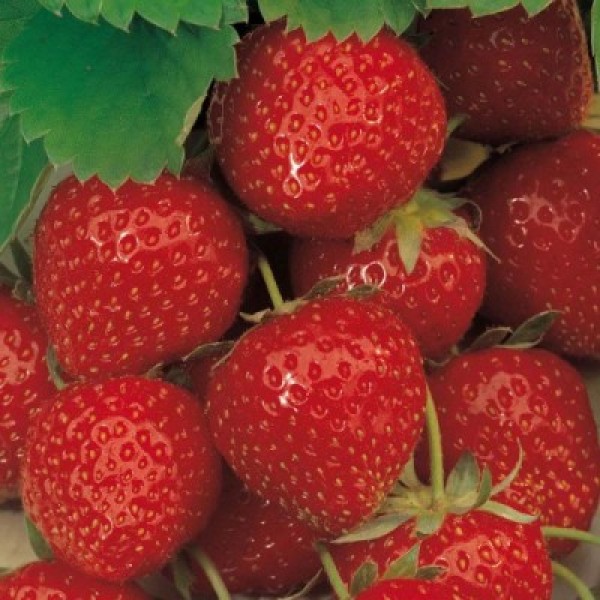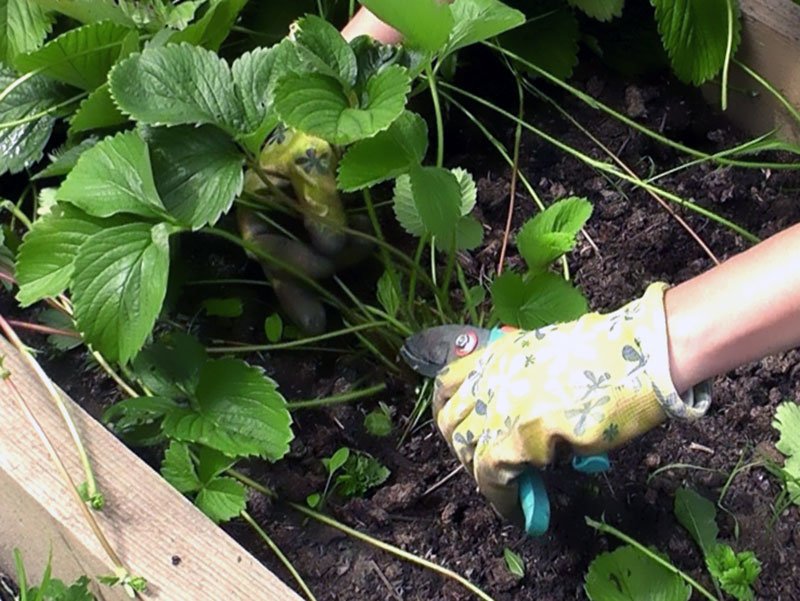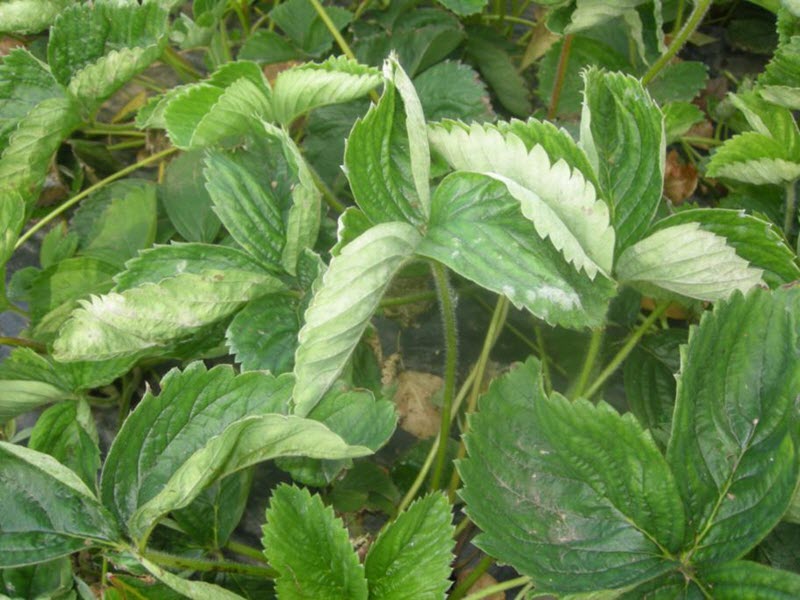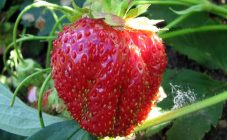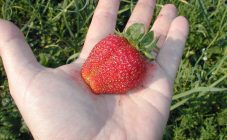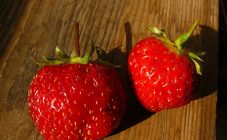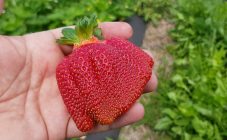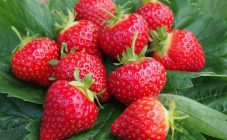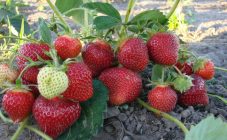Content:
Strawberry Lambada is the queen of strawberry flavor. It has a complex, pleasant taste with a hint of strawberry. The variety was first obtained in Holland in 1982 by crossing hybrid varieties and choosing the largest-fruited representatives. It is a dessert variety intended for cultivation in open ground and in greenhouses.
Variety characteristics
These strawberries are a great choice for home gardeners and budding gardeners. It is completely unsuitable for large farms due to its non-transportability. We will learn the features of the Lambada strawberry and the description of the variety.
Distinctive characteristics of the Lambada variety are:
- The pulp of the fruit is tender, juicy and tasty. In its sweetness, it is ahead of other varieties, even if not fully ripe. Strawberries have no sourness.
- The shape of the fruit is conical, slightly elongated, of deep red color. Sepals rise slightly upward. The fruit is uniform and always of the correct shape.
- Achene is yellow, slightly pressed into the pulp.
- The weight of each berry is up to 20 g. In the second year, individual specimens can reach sizes of 30 g.
- The yield is moderate. Up to 2 kg of berries are harvested from one bush per season.
- The leaves are bright and large. The variety has a large leafing.
- The flowers are large, with large stamens. During the flowering period, a lot of them appear, the flower stalks are strong.
- The stems form many long and powerful whiskers.
- The plant is resistant to verticillium and gray rot, but it can be sick with white and brown spot, as well as powdery mildew. Poorly resistant to red rot.
- The seedlings have an open root system.
- Fruiting begins in the second decade of May and lasts until mid-July.
When transporting such a berry, a large amount of juice is released. Berries lose their attractive varietal appearance.
Features of agricultural technology
In order for the plant to produce many tasty fruits, it is necessary to carefully adhere to the recommendations on agricultural technology.
Landing
Lambada strawberries grow best in low acid soil. Before planting, it is dug up and fertilized with mixed fertilizers. Planting is carried out in early autumn.
Before starting planting work, the seedlings should be soaked in a weak solution of potassium permanganate. Then they are rinsed in running water.
The bushes are planted at a distance of about 30 cm. Each bush is immersed in a small hole and the roots are straightened. Then carefully sprinkle it with earth and pull it up a little. It is necessary to ensure that the growth point is always on the surface.
After planting is completed, the strawberries are watered. During the first winter, the plants should be covered with straw or sawdust. If you plant seedlings in the spring, then over the summer the plants will get stronger, but the harvest will be given only in the second year.
Seed propagation
The procedure for growing planting material with this type of reproduction:
- grind the berry and soak the pulp in water for 2 days;
- when the berry begins to ferment, strain the entire contents through a sieve and collect the remaining seeds;
- before planting (around February), you need to keep the plants on the bottom shelf of the refrigerator;
- seeds are planted in the ground in early February, covered with glass and exposed in a warm place;
- when the first shoots appear, a dive is carried out, and the plants are planted in peat pots.
Strawberry care
It is a good viable variety and does not require any difficult maintenance.
The following growing rules must be observed:
- Make sure your plants get enough sun. In shaded areas, the yield drops sharply.
- The plant may die on saline soil. To prevent this from happening, plaster is applied in the fall (30 kg per 100 sq.m.).
- During flowering, the amount of watering decreases sharply. This must be done so that the plants do not develop fungal infections.
- The berry is fed with mineral fertilizers once every 2 years.
- The plant must be watered with water, the temperature of which is not lower than 15 °.
- After harvesting, diseased leaves are removed and fertilizers are applied.
- To protect against parasites, strawberries are treated with a 2% solution of Bordeaux liquid.
- The mustache is removed several times during the season.
- If the leaves are pale in June, then you need to apply nitrogen fertilizer.
Diseases
The plant does not suffer from gray rot, verticillary wilting, but can be affected by powdery mildew. If it appears, then after harvesting the plants must be mowed. After that, the entire bed is treated with a fungicidal composition and fed with a solution of boric acid.
The plant can be affected by such pests:
- aphid;
- Chafer;
- slug;
- strawberry mite;
- thrips;
- bear;
- leaf beetle.
Specialty stores have remedies for each of these pests. For preventive purposes, plants are treated with a solution of copper sulfate and soap.
Advantages and disadvantages of the variety
Advantages of the Lambada variety:
- frost resistance;
- disease resistance;
- long fruiting time;
- excellent taste;
- ease of care;
- abundant fruiting;
- universal purpose of the berry.
The only drawback of the Lambada strawberry is its non-transportability. Some gardeners consider a susceptibility to powdery mildew as a disadvantage. However, with proper care, the risk of damage is minimal.
The Lambada strawberry is an excellent variety for growing in home gardens. The berries are large in size and have an excellent taste. This strawberry can easily be grown by a summer resident without experience in agriculture.
